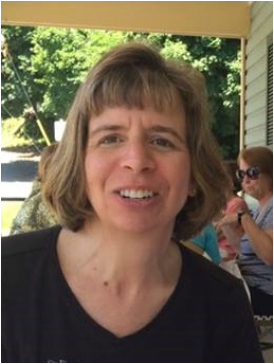| Amy Bittner, Blog Contributor Amy Bittner and her children have been at CHA for over 10 years. She has been involved in the high school program for a number of years, teaching 10th Grade Great Books, Latin, Classical Math, Senior Thesis and serves as a regular substitute throughout the academy! She has an avid love for the classics and enjoys challenging students to observe, question and respond! She and her husband, Bob, live in Carroll County and have two children, both at Christiana. Her daughter, Megan, is a senior and Sean is in 8th grade. Amy grew up in Maryland, attended Virginia Tech and when not busy at CHA, works part time as a pharmacist. |
The classical education movement has grappled with these questions, and there are no easy answers. In his article “Science and Liberal Education,” Matthew B. Crawford points to the tendency of our culture to justify learning by its utility instead of the intrinsic beauty of the subject matter. In The Well-Trained Mind, Susan Wise-Bauer and Jesse Wise propone a developmentally appropriate introduction of science by observation in the young child, experimentation in the middle years, and appropriate communication of research and findings in the high school years along with reading of works of famous scientists. This seems an excellent movement toward approaching science classically; as Sir Isaac Newton has said, “If I have seen a little farther, it is by standing on the shoulders of giants.” Toward this end, two initiatives have proved fruitful.
Two and a half years ago an invitation was extended to Christiana Homeschool Academy (then) rising 6th and 7th graders to start a Science Club during which we would read, discuss, and conduct appropriate activities related to Joy Hakim’s Story of Science series. These beautifully illustrated books contain the stories of the great scientific thinkers of history, their biographies, inspirations, successes, and failures. Five students accepted the invitation. Each week during the last three summers the students have read approximately two chapters and gathered together to discuss the reading. We have discussed the incomprehensible discoveries that were made without the aid of modern instruments, the cosmology of Aristotle and why it was wrong but we study it anyway, the contributions of the Greeks, the men who corrected Aristotle and discovered the heliocentric solar system, how we came to understand the existence and nature of atoms, and many other stories of the men who, over thousands of years, have worked toward discovering the true nature of the universe. An interesting phenomenon is that all five students have returned each year and ask if we will “do it again next summer.” While the prospect of baseball and soccer after our discussion is enticing, it is the subject matter, the compelling nature of the Story of Science, and the ability to add their voice to the discussion that draws these kids back each summer. They discover along with the scientists and see that “scientist” is too limiting a term; in many cases they are philosophers, teachers, and religious men, and in all cases they are lovers of truth. The students meet the men with the shoulders on which they stand. Even the young child and early teen is enticed by the search and yearns for truth.
The older student is ready for the real thing. As Mortimer Adler states in How to Read a Book, until recent years scientific writing was meant for the general population. Einstein states this in his introduction to Relativity as well. Accepting this challenge, six seniors and one junior over the last two years have joined me in reading the primary source writings of Plato, Aristotle, Euclid, Lucretius, Galileo, Newton, Einstein, and Hawking in an elective class called Classical Math and Science. Meeting the quintessential Renaissance man, we also read Leonardo da Vinci’s “Thoughts on Science” and explore the intersection of math, science, and art. Heeding Adler’s admonition to look for the questions the authors were asking, the students approach each work for its overarching message. What was the author asking? What aspects of the natural world was he interested in explaining? As best as we are able, what can we understand about his explanations? How does his explanation build on what was known before him, and how did subsequent writers add to his findings? After an initial phase of questioning why we read Plato in a math class, the students quickly see the story unfold before them and understand math as the language of nature and what we know as science in a new way. One student tells me every week, “I feel smarter when I leave this class!” That, my dear, is the legacy of Aristotle! We have had a brush with greatness.
Where does this leave the classical educator seeking to revive the natural philosopher? There is not an easy answer, for our culture teaches us that science is good for its usefulness and not necessarily its beauty and its truth. The study of the philosophy of nature through the centuries is indeed worthwhile for its own sake, for the forming of the soul which seeks it, for the training of the mind which studies it, for the order, beauty, and goodness which it reveals. The path is well worn and yet new again every time the riches of the journey unfold for a new generation. The treasure is there for the taking. By standing on the shoulders of giants, we can all be natural philosophers.

 RSS Feed
RSS Feed
